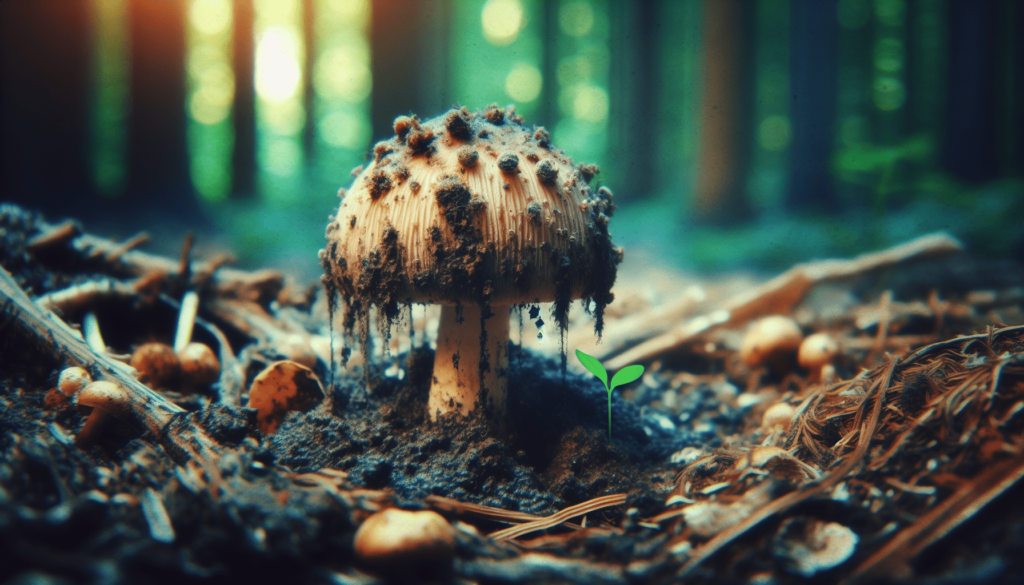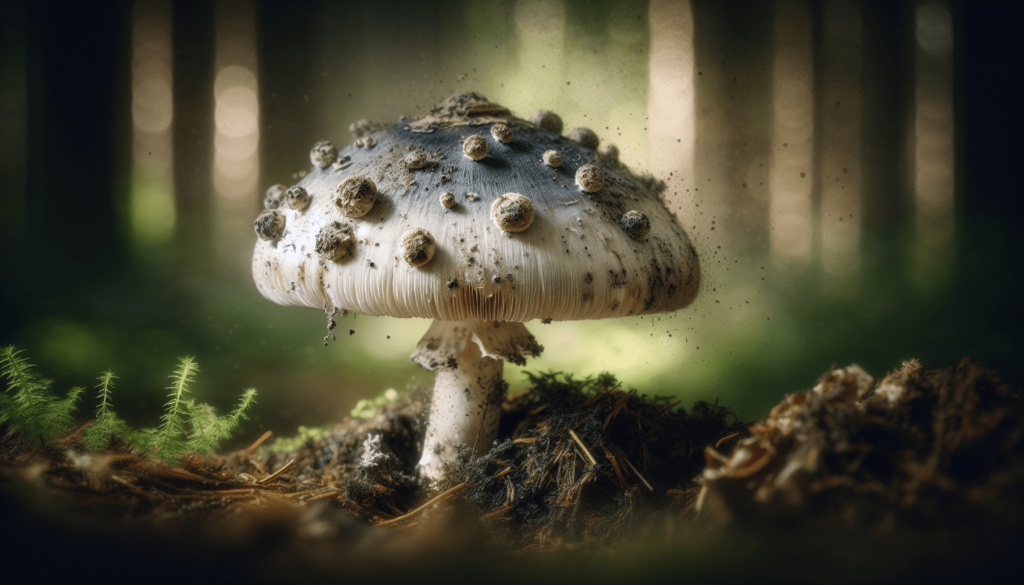Welcome to a friendly guide on identifying those pesky signs of mushroom contamination! In “What Are The Symptoms Of Mushroom Contamination?” you’ll learn how to spot the telltale signs that your mushrooms might be compromised. From unusual colors and textures to unexpected odors, recognizing these symptoms is crucial to ensuring your mushrooms are safe to eat. Dive in to become a savvy mushroom connoisseur and keep your culinary adventures both delightful and safe! Have you ever found yourself wondering if the mushrooms you just bought or harvested are safe to consume? Mushroom contamination is a crucial topic that every mushroom enthusiast or home cook should be aware of. It’s essential to identify the symptoms of contamination to ensure you’re not jeopardizing your health.
Introduction to Mushroom Contamination
Mushrooms are a fantastic addition to any meal, providing unique flavors and nutrients. However, they can also be carriers of harmful substances and organisms if not handled or stored properly. Mushroom contamination refers to the presence of unwanted bacteria, mold, or other harmful substances that can cause illness if consumed. Recognizing the symptoms of mushroom contamination is vital for your well-being.
Why Mushroom Contamination Happens
Several factors contribute to mushroom contamination. These include poor handling, improper storage conditions, and environmental factors during cultivation. Contaminants can range from bacterial infections to molds and other toxic substances.
Common Sources of Mushroom Contamination
- Environmental Factors: Mushrooms may absorb toxins from polluted soil or water.
- Improper Storage: Storing mushrooms in moist or unclean conditions can promote bacterial growth.
- Handling Issues: Mishandling mushrooms during picking, washing, or packaging can introduce contaminants.

Signs of Contaminated Mushrooms
Visual Indicators
Spotting visual changes is the first step in identifying contaminated mushrooms.
Discoloration
Mushrooms should have a consistent color appropriate to their variety. For example, button mushrooms should be white or off-white. If you notice any unusual colors like blue, green, or black, it might indicate mold or bacterial contamination.
Sliminess
A slimy texture is a strong indicator that the mushrooms have begun to rot or that bacteria are present. Fresh mushrooms should be firm and dry.
Darkened Gills
The underside of the mushroom cap has gills that should be a uniform color depending on the variety. If these gills darken significantly, it could indicate spoilage.
Odor Changes
Fresh mushrooms typically have an earthy, pleasant smell. A sour or fishy odor can be a sign of decomposition or bacterial contamination.
Texture and Firmness
Mushrooms should be firm and not mushy. Soft, mushy textures often indicate that the mushroom is rotten and potentially contaminated.
Mold Formation
Mold can appear as fine, white fuzz initially but may change to green, black, or blue hues. Any visible mold on mushrooms suggests contamination.

Types of Mushroom Contaminants and Their Symptoms
Different contaminants can affect mushrooms, each with its specifics signs and symptoms.
Bacterial Contaminants
Bacteria like Listeria, Salmonella, and E. coli can contaminate mushrooms. Consuming contaminated mushrooms can lead to gastrointestinal issues, including nausea, vomiting, and diarrhea. If you experience these symptoms within a few hours of consumption, a bacterial contaminant might be the cause.
Table: Common Bacterial Contaminants and Symptoms
| Bacteria | Symptoms | Onset Time |
|---|---|---|
| Listeria | Fever, Muscle Aches, Nausea, Diarrhea | Several days to weeks |
| Salmonella | Abdominal Cramps, Diarrhea, Fever | 6 hours to 6 days |
| E. coli | Severe stomach cramps, Diarrhea (often bloody) | 1 to 10 days |
Mold Contaminants
Molds like Aspergillus can develop on mushrooms. Some molds produce mycotoxins, which are toxic and can cause respiratory issues or allergic reactions. Symptoms might include coughing, sneezing, runny nose, and skin irritation.
Table: Common Mold Contaminants and Symptoms
| Mold | Symptoms | Onset Time |
|---|---|---|
| Aspergillus | Coughing, Wheezing, Runny Nose, Skin Rash | Hours to a few days |
Chemical Contaminants
Mushrooms can absorb heavy metals or pesticides from their growing environment. Symptoms of heavy metal poisoning include headache, vomiting, and muscle pain. Pesticide exposure can cause dizziness, headache, and nausea.
Table: Common Chemical Contaminants and Symptoms
| Chemical | Symptoms | Onset Time |
|---|---|---|
| Heavy Metals | Headache, Muscle Pain, Vomiting | Several hours to days |
| Pesticides | Dizziness, Nausea, Headache | Minutes to hours |
Pathogenic Contaminants
Wild mushrooms can sometimes be picked and misidentified as a toxic species. Symptoms vary widely but can include gastrointestinal distress, neurological symptoms, or even organ failure in severe cases.
Table: Common Pathogenic Contaminants and Symptoms
| Pathogen | Symptoms | Onset Time |
|---|---|---|
| Amatoxins (found in Amanita mushrooms) | Severe abdominal pain, vomiting, diarrhea, organ failure | 6 to 24 hours |

Preventing Mushroom Contamination
Buying Tips
When purchasing mushrooms, always choose those that are fresh, firm, and free from visible mold or discoloration. Avoid mushrooms with a slimy texture or a strong, off-putting odor.
Storage Tips
Proper storage is crucial to extend the shelf life of your mushrooms and prevent contamination.
- Refrigerate: Store mushrooms in the fridge at a temperature of around 34-38°F (1-3°C).
- Keep Dry: Store them in a paper bag to absorb excess moisture and prevent sliminess.
- Use Fresh: Try to use mushrooms within a few days of purchase for the best quality.
Handling Tips
Always wash your hands before and after handling mushrooms. Use clean utensils and surfaces to avoid cross-contamination.
Cooking Tips
Cooking mushrooms thoroughly can kill off most bacteria and molds. However, it’s essential to start with mushrooms that show no signs of spoilage or contamination to ensure the safest possible meal.
Safe Harvesting
When harvesting wild mushrooms, make sure you are 100% certain you have correctly identified safe, edible varieties. Use guides, apps, or seek advice from experienced foragers to avoid mistaken identity.

What To Do If You Suspect Contamination
Immediate Steps
If you suspect contamination, do not consume the mushrooms. Dispose of them safely and clean any surfaces or utensils that may have come into contact with the contaminated mushrooms.
Seeking Medical Help
If you experience any symptoms of illness after consuming mushrooms, seek immediate medical attention. Provide as much information as possible to your healthcare provider, including the type of mushrooms consumed, symptoms experienced, and onset time.

Conclusion
Being informed about mushroom contamination symptoms can help you make safer choices when buying, storing, and consuming mushrooms. By paying attention to visual indicators, odors, and textures, you can reduce your risk of ingesting contaminated mushrooms. Always take preventive measures and handle mushrooms with care. If you ever find yourself in doubt, it’s better to err on the side of caution and discard any questionable mushrooms.
Remember, your health and safety come first. So, enjoy your culinary adventures with mushrooms, but stay vigilant and informed to avoid any unpleasant surprises.
